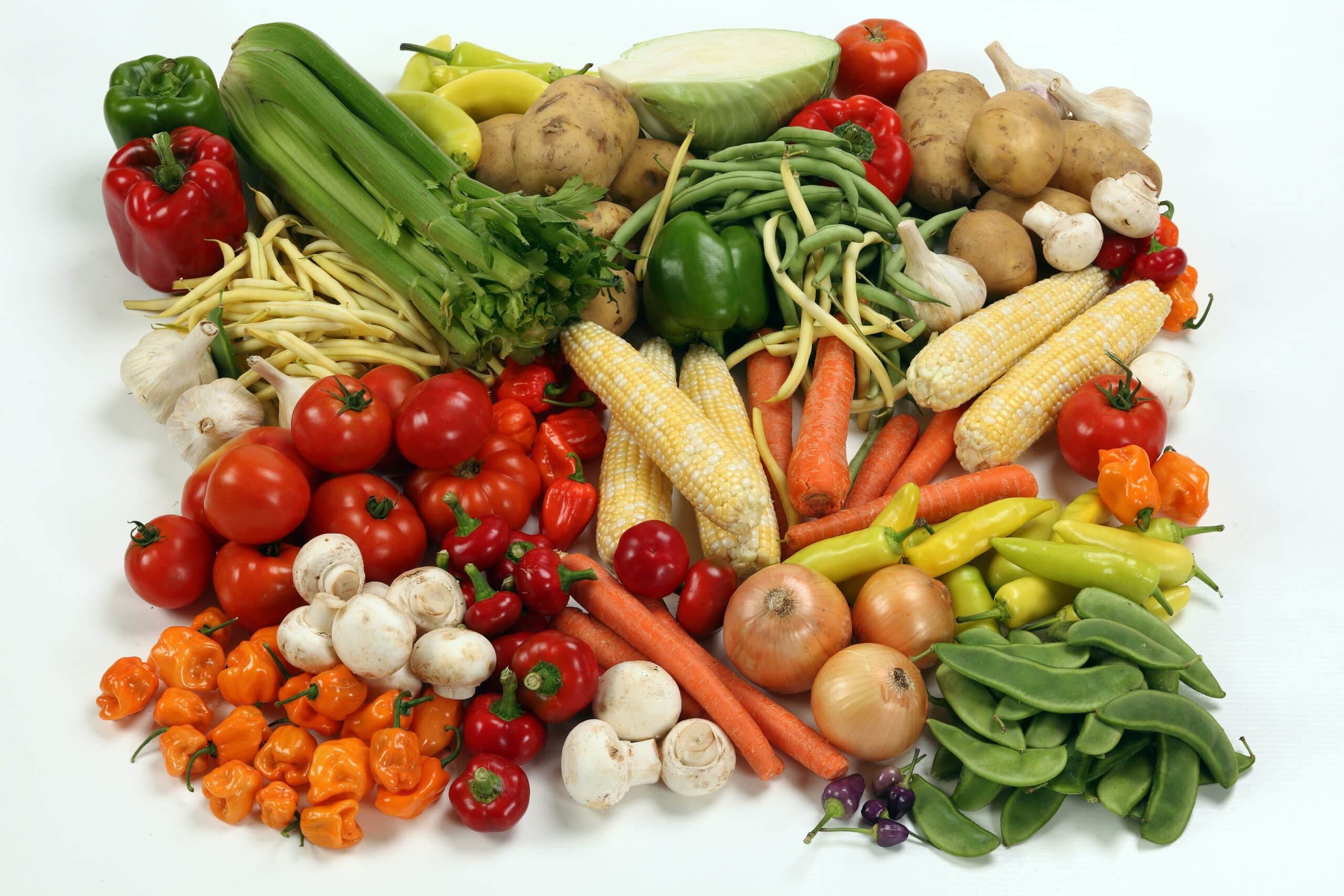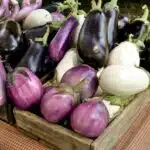Have you ever felt the satisfying crunch of a carrot fresh from your garden? It’s an experience like no other, and one that more and more people are looking to make part of their lives. Growing your own carrots is easier than you may think; with just a few simple steps you can start your own carrot patch – and reap the rewards!
We’ll take you through everything from soil preparation to harvesting, so you can enjoy the joy of eating carrots freshly plucked from your very own garden. Carrots require minimal care, but there are a few key tips that will ensure they thrive. We’ll show you how to create a perfect environment for your carrots, so they can flourish and provide you with plenty of delicious root vegetables.
No matter whether you’re just starting out or have been gardening for years, this guide will give you all the information needed to grow and care for carrots in your vegetable garden. Let’s get started!
Selecting The Right Carrot Variety
Carrots are an essential part of any vegetable garden, with their bright color and sweet taste. Planting carrots is as easy as planting other vegetables – you just need to select the right variety! As they say, ‘the devil is in the details’, so let’s dive into growing these delicious root veggies.
When it comes to growing carrots, variety is key. Different varieties will have different needs and preferences when it comes to soil and climate, so make sure you choose the right one for your area. Knowing what type of carrot works best in your area will help ensure that your carrots grow to their full potential.
Once you’ve chosen the right variety, it’s time to prepare your soil. Carrots need a lot of nutrients, so adding organic matter such as compost or manure will help create a nutrient-rich environment for them to thrive in. Make sure the soil is well-drained but still moist enough for the carrots to absorb all the water they need. With some careful preparation, you’ll be ready for a successful harvest of juicy carrots!
Now that we have our soil prepped and ready to go, let’s get started on our carrot crop!
Preparing Soil For Growing Carrots
Have you ever wondered how to optimally prepare soil for growing carrots? It is no secret that properly preparing the soil for growing carrots is essential for a successful and healthy harvest. Let’s explore the best practices for ensuring that your carrot crop will thrive!
There are several steps required to successfully prepare the soil for planting carrots. To begin, it is important to make sure the garden space has good drainage. If needed, add compost or aged manure to improve drainage and work this into the top layers of soil with a shovel or rake. This process helps ensure that the carrots are not sitting in waterlogged soil, as this can lead to root rot and other problems. Additionally, be sure to remove rocks, weeds, and other debris from the area before planting.
Next, test the pH levels of your soil before planting. Carrots prefer slightly acidic soils between 6.0 and 6.5 on the pH scale. If needed, add some lime or sulfur based on your test results to adjust the pH level accordingly; if unsure about what type of amendment may be necessary, consult your local gardening expert for advice.
To end up with a nutrient-rich environment for your carrots to grow in, fertilize prior to planting using either an organic fertilizer such as compost tea or fish emulsion fertilizer; alternatively, you can also use a balanced synthetic fertilizer like 10-10-10 following package instructions carefully. Lastly, remember that carrots need room to spread out their roots so keep them spaced around three inches apart in rows approximately 12 inches wide when planting seeds directly into the ground – this will help promote good air circulation which is key for keeping disease at bay!
Planting Carrot Seeds
Once you’ve got your soil prepped, it’s time to get out the carrot seeds! Planting them is relatively easy and can be done in a few simple steps.
First, make a shallow furrow in the soil with a garden hoe or trowel. This should be about half an inch deep and two inches wide. Sprinkle the carrot seeds into the furrow, spacing them one to two inches apart. Then, lightly cover them with soil by patting down on top of the furrow with your hand.
Finally, water the area well and keep it moist while they germinate. Carrot seeds are very small so they need consistent moisture in order to sprout and grow successfully. While you’re waiting for them to come up, keep an eye out for weeds which can steal nutrients and water from your carrots if left unchecked.
With proper care and attention, you’ll soon be enjoying some delicious homegrown carrots! But first things first: ensuring your carrots get enough water and nutrition is key for their growth. Let’s take a look at how to do this next!
Watering And Feeding Carrots
Once you’ve planted your carrot seeds, it’s time to ensure they get the water and nutrients they need to grow! But what should you do to ensure that your carrots are getting the best care possible? In this section, we will explore the steps you can take when it comes to watering and feeding your carrots.
Are you ready to learn how to give your carrots the best chance of growing big and strong? Let’s dive in with four essential tips:
Water Carrots Regularly: Carrot seeds need a good deal of water after planting. Make sure and keep them moist until they begin to sprout. Once they have sprouted, water them deeply once or twice a week. This will help them soak up all the nutrients from the soil.
Feed Your Carrots: Use an organic fertilizer or compost tea every two weeks after your carrots have sprouted for optimal growth. They love nitrogen-rich fertilizers but be sure not to overfeed them as this can cause leggy, weak plants that won’t produce any carrots!
Give Carrots Plenty Of Sunlight: As most vegetables do, carrots require plenty of sunshine for optimal growth; 6-8 hours is ideal for most varieties of carrot! If you live in a colder climate then grow your carrots under cover during cooler months so that their leaves don’t freeze off!
Don’t Overcrowd The Plants: When planting carrot seeds, try and leave enough room between each plant so that they have space to grow without overcrowding each other. Too much competition between plants can affect their growth negatively.
By following these simple steps, your carrot plants should thrive and reward you with delicious carrots come harvest time! To further protect your plants from pests and diseases while promoting healthy soil life, next we’ll look at mulching around your carrot plants.
Mulching Carrots
Mulching is an essential step in caring for carrots. It helps to retain moisture, reduce weeds, and limit the risk of pest infestations. Plus, it can give your carrot patch a nice finished look.
To mulch your carrots, spread a 2-3 inch layer of organic material such as straw or shredded leaves over the soil around the carrot plants. Make sure to leave some room between the mulch and the crown of the plant so that water can easily reach the roots. You can also use plastic or landscape fabric, but make sure to cut holes for each plant’s location first so that you don’t have to disturb them after planting.
It’s important to keep an eye on your mulch throughout the growing season and replace any areas that become thin or washed away by heavy rains. Doing so will ensure your carrots get all the water and nutrients they need for optimal growth and health.
Carrot Pests And Diseases
A garden filled with fresh, crisp carrots is a sight to behold. Truly, it’s a reward for any gardener who has put in the effort to bring this bountiful root vegetable to life. But before we can enjoy the carrots, there are some pests and diseases we need to keep an eye out for.
Pests can be anything from birds to insects such as carrot rust fly or carrot weevil. These critters can cause damage by eating away at the roots or leaves of our precious carrots. Birds can also be a nuisance by snatching them up and taking them away! Fortunately, there are ways to deter these pests such as netting and pest control products that can help prevent future damage.
Diseases on the other hand can come in many forms including fungal diseases like Alternaria leaf blight or bacterial diseases such as bacterial blight. To combat these ailments, proper crop rotation and sanitary growing conditions are key. Additionally, using resistant varieties of carrots is another great way to fight against disease-causing organisms in our gardens.
By being aware of these possible threats and taking steps to prevent them, we can ensure that our gardens will yield healthy and delicious carrots for us all to enjoy!
Controlling Carrot Weeds
It’s natural for gardeners to want their carrots to thrive, but controlling weeds is an important part of the process. Some might think it’s too much effort, but the truth is that it’s essential if you want your carrots to be free from competition and pests. With a few simple steps, you can keep weeds at bay and ensure your carrots are healthy and tasty.
Weeds can easily compete with other plants in your garden for resources like water, light, and nutrients. They also harbour pests that can damage or destroy your carrot crop. Fortunately, there are several methods you can use to control weeds in your vegetable garden without resorting to harsh chemicals or manual labour.
Mulching is a great way to prevent weed seeds from germinating and depriving your carrots of vital resources. You can use organic materials like wood chips or straw around the plants or lay down landscape fabric which prevents weed growth while still allowing moisture into the soil. Additionally, hand-weeding ensures any existing weeds are removed before they have a chance to spread further.
By taking proactive steps such as mulching and regular weeding, you’ll be able to enjoy fresh carrots throughout the growing season without worrying about competing vegetation or pest infestations. Now that we’ve discussed how best to control weeds in your carrot patch, let’s look at how you should go about harvesting them when they’re ready!
Harvesting Carrots
Are you ready to harvest your carrots? After weeks of growing and caring for your healthy crop, it’s time to finally reap the rewards of your hard work! Harvesting carrots is a great way to enjoy the fruits of your labor while ensuring that you have a large supply of delicious vegetables.
When harvesting carrots, timing is everything. The best time to pick them is when the carrots are ¾ inch in diameter. Using a trowel or a garden fork, carefully loosen the soil around each carrot before pulling it out gently. If you find that some carrots are still too small, leave them in the ground to grow a little bit longer.
Once all of your carrots are harvested, it’s important to store them properly if you want them to stay fresh for days or even weeks. To do this, cut off the leafy tops and keep them in cool, dark places where they won’t be exposed to light or heat. This will help prevent them from rotting away prematurely.
Storing carrots correctly can help ensure that they stay fresh and tasty for as long as possible. With proper care and attention, you’ll be able to enjoy your homegrown crop for months!
Storing Carrots
It’s possible that some gardeners are hesitant to store their carrots, either due to lack of space or because they may not know how. But protecting the carrots you’ve worked so hard to grow is essential for keeping them fresh and delicious. Storing carrots correctly will help ensure that your harvest lasts as long as possible.
Carrots can be stored in a variety of ways depending on the climate in your area and the storage space available. In areas with mild winters, carrots can be stored in the ground with mulch, straw or other insulating materials to prevent frost damage from cold temperatures. If you don’t have enough room outdoors, you can also store them inside in a cool place such as a root cellar or even a refrigerator.
Vegetables stored in airtight containers like jars or plastic bags will last longer than those left open to the air. It’s important to trim off any greens and remove excess dirt before storing your carrots; this will help reduce spoilage and extend their shelf life. Additionally, if you’re using an airtight container make sure it is large enough for your carrots so they don’t get crushed during storage. Taking these extra steps will help ensure that your carrots stay fresh and flavorful until you’re ready to enjoy them!
Troubleshooting Common Carrot Growing Problems
Planting carrots can seem like a daunting task, but with some patience and know-how, it’s a piece of cake. While you may have had success in growing carrots, troubleshooting common carrot growing problems can feel like an uphill battle. In this section, we’ll discuss how to tackle any potential issues that may arise.
First and foremost, be sure to use well-drained soil for your carrots. If the soil is too compacted or soggy, your carrots will not develop well and may even rot in the ground. Additionally, make sure you keep your garden weeds-free so as not to compete with your carrots for water and nutrients.
Finally, pests can be problematic when growing carrots. To prevent them from hijacking your crop, use floating row covers over the garden bed while the seedlings are young and vulnerable. Also consider using companion planting techniques by planting certain flowers alongside your carrots which can act as natural deterrents to pests. With these preventive measures in place, you should have no trouble growing delicious carrots!
Propagating Carrots
Maybe you’ve been successful in growing carrots, and now you’re looking to expand your patch or share with friends? Propagating carrots is a great way to ensure a plentiful harvest! It’s also an economical approach that can help you save money.
Propagating carrots can be done in two ways: from seed or from cuttings. Both methods are fairly simple and straightforward. Starting from seeds requires more patience than cutting but offers a greater degree of control over the result. On the other hand, cutting allows for faster results and doesn’t require as much space.
Regardless of which method you choose, there are a few important things to keep in mind. The soil should be loose and free of weeds, and the temperature needs to remain consistent for optimal growth. Keep in mind that both methods require regular watering and care if you want them to thrive! With some planning, effort, and attention, propagating your own carrots is sure to be a rewarding experience.
Ready to take your carrot growing up a notch? Companion planting is an excellent way to make the most of your garden space while helping protect your carrot crop from pests.
Companion Planting For Carrots
Companion planting for carrots is like making a new friend. You know your own strengths, but when you add another person who compliments those strengths, you create an even more powerful team. That’s what companion planting does for carrots and other vegetables in the garden. It helps them to reach their full potential.
By interplanting vegetables that are compatible with each other in terms of their growth patterns and nutritional needs, you can get the most out of your garden. Carrots, for instance, do well when paired with onions or chives as they are both strong repellants of pests that can harm carrots. Tomatoes and parsley also make good companions for carrots because both plants thrive in similar soil conditions and promote better overall health for each other.
Companion planting provides a number of benefits to carrot plants besides pest control. For example, it can help improve the flavor of carrots by providing additional nutrition and creating a microclimate around the plant that protects it from wind and sun damage during hot summer days. Additionally, companion planting reduces weeds while increasing moisture retention in the soil which helps keep carrot roots moist and healthy.
It’s important to carefully consider all factors before attempting companion planting with carrots as some vegetables may be better off planted separately due to different light or water requirements which could end up competing with one another instead of benefiting each other…
Composting Carrot Leaves
Composting carrot leaves is a great way to help improve the soil quality for your carrots. As you harvest, don’t throw away the leaves – compost them! Composting is an important part of gardening and can provide nutrients to your soil that help it stay healthy and balanced. Plus, it’s a great way to recycle natural materials from your garden.
When composting carrot leaves, be sure to chop them into small pieces before adding them to your compost bin. This will give them more surface area and make it easier for microorganisms and insects in the bin to break down the material. Adding some nitrogen-rich material such as grass clippings or food scraps can also help speed up the decomposition process. And remember to keep the bin moist so that everything breaks down quickly.
Composting carrot leaves is an easy way to improve soil quality without spending any extra money on fertilizers or other treatments. It’s also a great way to reduce waste by turning something that would otherwise go in the trash into something beneficial for your garden. So, when harvesting carrots, don’t forget to save those leaves and turn them into compost! With this simple step, you’ll be well on your way towards improving soil quality for growing carrots.
Improving Soil Quality For Growing Carrots
It is said that a gardener’s soil is their greatest asset. As such, it should come as no surprise that improving the quality of your soil for growing carrots can be the difference between success and failure in the garden.
One story that illustrates this point comes from my own experience of growing carrots. Despite my best efforts to provide adequate water and sunlight, I noticed that some of my carrots were not growing as large or healthy as others. After a bit of investigation, I found out that the soil was lacking in key nutrients like nitrogen and potassium which carrots need to thrive.
By taking steps to improve my soil quality—such as adding organic matter like compost or aged manure—the size and quality of my crop greatly improved! This goes to show just how important it is to make sure your soil has all the necessary elements for healthy carrot growth. With an ideal mix of nutrients, you can ensure a bountiful harvest every time.
The next step towards a successful carrot crop is choosing which variety to grow in your garden.
Common Carrot Varieties To Try
Time to take a trip back to traditional times! Growing carrots has been a mainstay in vegetable gardens for centuries, but with all the modern varieties available today, it can be overwhelming to decide which ones are best suited for your garden. In this article, we’ll explore 15 common carrot varieties that you can try out in your vegetable garden.
Let’s start with the classic favorites: Nantes and Danvers. These carrots have been around since the 19th century and are some of the most popular carrots to grow due to their great flavor and texture. They are also easy to grow, making them an ideal choice for beginners. If you want something a little sweeter, then Chantenay and Imperator types might be just what you need. Both of these varieties offer a sweet flavor that pairs well with a variety of dishes.
For those looking for more unique flavors, there are some interesting options out there as well. For example, Scarlet Nantes is a beautiful variety that has an intense flavor that is sure to please even the pickiest eater. Another great option is Sugar Snap – this variety offers both crunchy texture and sweetness that makes it perfect for salads or snacking on its own.
No matter what type of carrot you choose, caring for them properly will ensure they produce healthy crops year after year. Make sure they get plenty of sun and water while keeping an eye out for pests or diseases that could cause damage to your crop. With proper maintenance, these delicious vegetables will be part of your garden’s bounty for years to come!
Frequently Asked Questions
What Is The Best Way To Fertilize Carrots?
Growing carrots is like building a house – the foundation must be strong for the structure to stand tall and proud. Fertilizing carrots is like crafting that foundation; it’s essential for a bumper crop of this healthy vegetable. For an optimal harvest, the best way to fertilize carrots is to apply a balanced fertilizer when prepping your soil prior to planting.
When applying fertilizer, start by tilling it into the upper 6 inches of soil before planting your seeds. This will give them a good head start on their growth cycle by providing necessary nutrients right away. The amount of fertilizer you’ll need depends on how much organic matter is already present in the soil, so it’s best to test and adjust accordingly. You should also consider adding compost or other organic material such as manure when preparing your soil for carrots; this will help keep the nutrient balance in check over time and reduce the need for additional fertilizing later on in the season.
It’s also important to water your carrot plants regularly; this helps ensure their roots receive all of the nutrients they need from the soil and prevents them from drying out or becoming stressed due to lack of moisture. When watering, use lukewarm water that won’t shock their delicate systems and make sure to avoid over-watering so that you don’t drown your crops. With proper care and attention, you can maximize your carrot yield each year with minimal effort!
How Deep Should Carrots Be Planted?
When planting carrots, it’s important to know how deep they should be planted. Proper depth is key to growing healthy and delicious carrots.
So, how deep should you plant your carrots? Generally speaking, the rule of thumb is that carrots should be planted at a depth of about one inch – or slightly deeper if the soil is poor or sandy. The best way to determine the right depth for your carrots is to use a trowel or other gardening tool to dig a hole in the soil that’s roughly twice as wide as the carrot seed you are planting. This will ensure that your carrot seed has enough space to fully expand and take root without being crowded by too much soil.
If you’re looking for an even easier way to make sure your carrots are planted correctly, try using an upside-down mulch like straw or hay. Just place some of the mulch on top of the ground where you want your carrots and then plant the seeds in it. This can help keep moisture in while also providing insulation against temperature extremes, both of which are necessary for growing healthy carrots. So if you want easy and successful carrot growth, give this method a try!
How Do I Know When To Harvest My Carrots?
Harvesting your carrots is an exciting part of growing them in the vegetable garden. But how do you know when it’s time? Let’s look at some tips to help you know when your carrots are ready to be harvested:
First, check the size of your carrots. Carrots will reach full maturity after about 65-80 days, depending on the variety you planted. If they have reached their desired size and shape, they’re likely ready for harvesting.
Second, look at the color of your carrots. When they have a bright orange color that is consistent throughout, they are usually ripe enough to pick. Don’t wait too long though—if left in the ground too long, carrots can become woody and bitter.
Third, examine the foliage. If the leaves near your carrot tops start to turn yellow or brown and die back, this is a sign that it’s time to harvest them soon.
Here are some additional tips for harvesting your carrots: • Always use a garden fork or trowel when harvesting carrots from deep soils; pulling them out with your hands can cause damage to their roots as well as neighboring plants. • Cut off any large leaves at least one inch above the carrot top before storing in order to prevent spoilage and disease transmission between plants. • Store freshly-harvested carrots in a cool place with high humidity until ready for eating or preserving; don’t let them sit in direct sunlight or air temperatures higher than 75°F (24°C). • Wash dirt off before eating by lightly scrubbing under running water with a brush or cloth towel; peeled carrots should be eaten within two weeks while unpeeled ones can last up to two months refrigerated in an air-tight container.
Harvesting your carrots at just the right time will ensure that you get the best flavor and nutrition from each one! With these tips in mind, you’ll be able to confidently pick those tasty veggies when they’re perfectly ripe!
How Long Do Carrots Take To Grow?
Growing carrots is a labor of love and takes a bit of patience. It can be quite rewarding when you finally get to harvest your carrots, but before then there is the waiting game. Knowing how long it takes to grow carrots is an important factor in determining when to plant them and when to expect that delicious reward.
Carrots are easy to grow as long as you have the right environment for them. If you provide them with fertile soil, plenty of sunshine, and adequate water they will thrive. Many gardeners say that it can take between sixty to seventy five days from planting until harvest time but this is just a rough estimate.
Weather conditions, soil temperature, and variety will all affect the growth rate so it’s best to keep an eye on your carrot patch while they’re growing. To check their progress, carefully pull back some of the soil around the stem and take a peek at the size of the root – if it’s big enough for your liking then it’s time for harvest! Don’t forget that practice makes perfect; over time you will get better at gauging when your carrots are ready to be pulled from the ground.
It may be a bit of trial and error in the beginning but once you get into a routine it won’t take long until you have mastered growing carrots!
Are There Any Pests Or Diseases That Are Particularly Detrimental To Carrots?
Growing carrots is a great way to add fresh, tasty vegetables to your home. But it’s important to know that there are certain pests and diseases that can be harmful to carrots. Let’s take a look at what we need to be aware of when growing carrots.
First, let’s talk about pests that may affect the growth of your carrot plants. Carrot rust fly maggots, cabbage root flies, and flea beetles can all cause damage by eating the leaves and roots of the plant. Additionally, slugs and snails can also munch on young carrots as they are developing. To help protect against these pests, you should use garden netting or row covers over your carrot beds and use a barrier around the perimeter of the bed like crushed eggshells or diatomaceous earth.
In addition to pests, there are several diseases that you should be aware of when growing carrots. Fungal diseases such as Alternaria leaf blight and Cercospora leaf spot can cause the leaves of the carrot plants to yellow and die off. Bacterial diseases such as bacterial soft rot can cause rotting in both leaves and roots of the plant. To prevent these diseases from occurring, make sure you have good air circulation around your carrot plants and avoid overhead watering that could spread disease spores from plant to plant.
Here are four tips for protecting your carrots against pests and disease:
- Use row covers or garden netting over your carrot beds;
- Create a perimeter barrier with items like eggshells or diatomaceous earth;
- Make sure there is good air circulation around your plants;
- Avoid overhead watering that could spread disease spores between plants.
By following these simple steps, you can help ensure a healthy harvest of delicious carrots!
Conclusion
Carrots are a wonderful, nutritious vegetable to grow and enjoy. With proper care and attention, you can reap the rewards of a thriving carrot patch all season long. Fertilize your carrots with the right mixture, plant them at an appropriate depth for their variety, and harvest them when they’re ready. You may have to take extra steps to protect your carrots from pests or diseases, but it will be worth it in the end.
Growing carrots is a rewarding experience that can bring out the inner gardener in anyone. Watching as your little seedlings turn into plump roots gives you a sense of accomplishment that can’t be beat. When you bite into one of these sweet vegetables after harvesting them yourself, you’ll understand why so many people consider growing carrots to be an essential part of gardening.
Carrots are an essential part of any garden and require special attention to get the best results. With the right knowledge and some effort, you can have delicious carrots harvested from your very own backyard in no time!





























